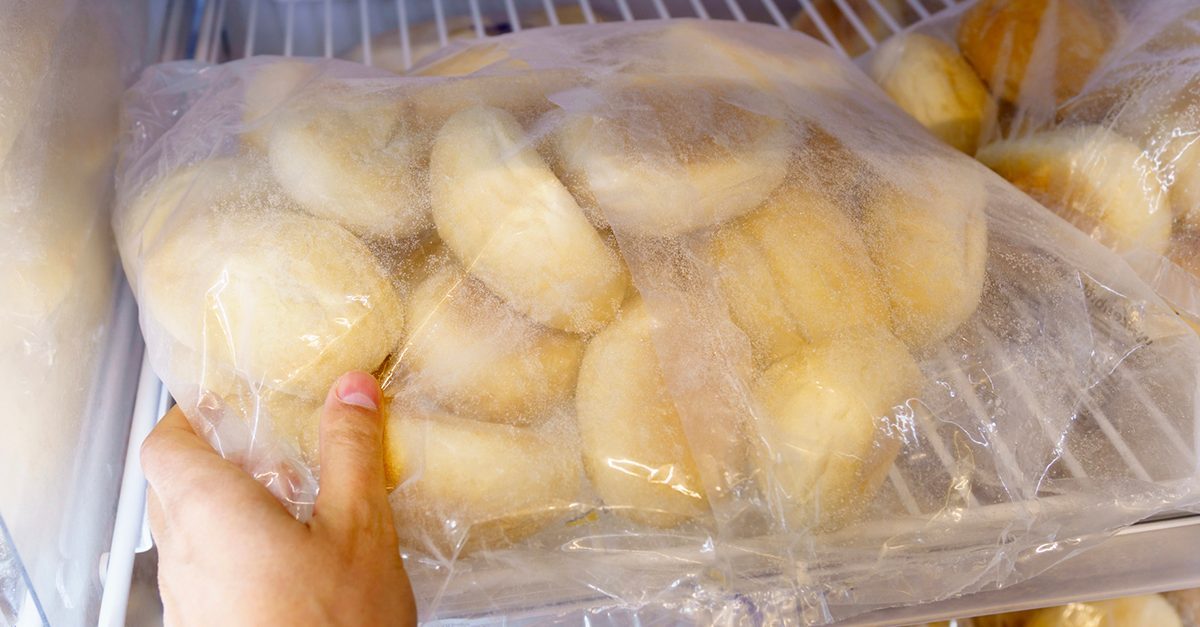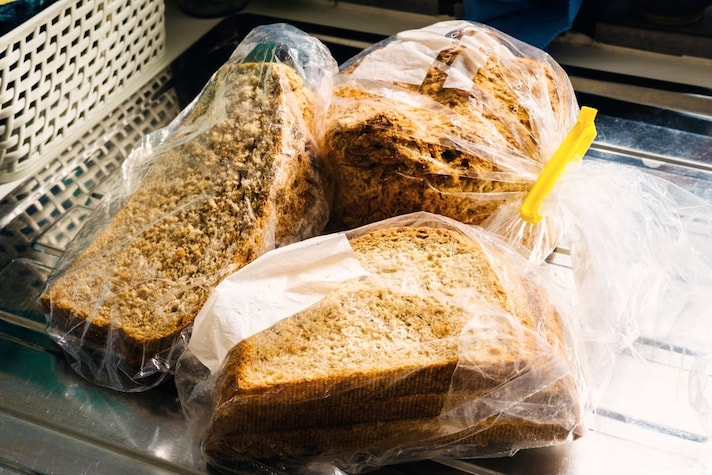How to Correctly Freeze and Thaw Your Bread
Defrosting bread at room temperature is one of the best ways to bring it back to (almost) its original freshness, but you need to take some precautions so as not to harden it or, on the contrary, make it rubbery and not very fragrant.
;)
Bread is a food that is rarely missing from diets due to its versatility and the many types available: some people eat it sparingly, some even eat it with pasta, some use it only to make a sandwich or to accompany salads. Some people love rosettes, ciabattas or baguettes, and some prefer sandwich bread or sourdough loaves. When it is fresh, and not bought in a box at the supermarket, it must be consumed throughout the day or it will become hard. To avoid wasting it and to keep it better for longer, the solution is to freeze it: it can happen that you have bought too much bread or that you can no longer eat it within a few hours. Let's see in this short guide how to store it correctly in the freezer, but also what are the best methods to thaw it, so as to enjoy it (almost) as if it were freshly baked.
How to Freeze Bread
Bread, like many foods, can fortunately be frozen: it lasts a maximum of 3 months, as it gradually loses its organoleptic characteristics, becoming drier and less tasty. How can you get the best possible result? First of all, it's a question of time: the bread should be put in the freezer within 12 hours of being prepared, so if you buy it freshly baked in the morning, try to freeze it on the same day, so before it starts to lose its fragrance and consistency, as it hardens. Depending on the use and size of the loaf, you can then decide to cut it into slices, a simple solution when you plan to consume it gradually, so as to thaw only the quantity needed, or whole, perfect if you need to prepare a sandwich.
How do you package it? Protect it well to avoid direct contact with ice and air: the recommended option is to wrap it in cling film, or transfer it to a well-sealed food bag. If cut into slices, the trick is to separate them with sheets of baking paper, which prevent the surfaces from sticking together. If you have space for airtight containers, use them as additional protection: they are useful for preventing the bread from absorbing the odors of other foods. Where is best to place the bread? There are no particular instructions if you have a drawer freezer, just make sure the temperature is set to -0.4°F/-18°C. If you have a single cell, however, place it away from the walls, so as not to let it “freeze” at the points of contact, and not even near the door, especially if it opens and closes frequently, as it can be subject to temperature changes.

Best Methods for Thawing Bread
Once you have made sure that the bread has been frozen correctly, when you intend to use it you must pay attention to how you thaw it, precisely to give it the right consistency: it is very easy, in fact, for it to be rubbery. Let's see how you can proceed.
- At room temperature: this is the best solution. Just leave the bread out of the freezer, wrapped in a cloth or in its storage bag, so that the humidity does not disperse too quickly. The slices defrost in about 15-30 minutes, while a whole loaf requires 3-4 hours. In summer, the suggestion is to follow the cold chain, leaving it in the refrigerator.
- In the oven: ideal for regenerating a fragrant, warm bread with a crunchy crust. Preheat the static oven to 320-360°F (160-180°C) and place the loaf or slices on a baking tray: in the first case wait about 20 minutes, while in the second half will be enough. You can also apply this technique with the bread already almost completely defrosted in the fridge or outside on the cupboard: mark convection oven for 10 minutes at 250°F/120°C.
- With a toaster or in a pan: a quick way when it comes to sliced bread. It is defrosted and toasted at the same time, thus giving the bread a consistency similar to that of freshly baked, enriched by a pleasant browning. Even a non-stick pan can be used with a similar result: just heat it slightly and turn the bread until it becomes warm and fragrant.
- In the microwave: although it may seem like a quick solution, the effect that this appliance has on the bread is that of an initial softness, which suddenly turns into hardness. It is better to avoid it, in short, but if it is really necessary, set the defrost function and follow the times indicated on the model; otherwise go to maximum power only for a few minutes, or it will become too moist and watery. In any case, the crispiness of the crust will be compromised.
;Resize,width=767;)
;Resize,width=712;)
;Resize,width=712;)

